
The Big Bang is a physical theory that describes how the universe expanded from an initial state of high density and temperature. The Big Bang theory was inspired by the discovery of the expanding Universe by Edwin Hubble. It was first proposed in 1927 by Roman Catholic priest and physicist Georges Lemaître. Lemaître reasoned that if we go back in time, there must be fewer and fewer matter, until all the energy of the universe is packed in a unique quantum. Various cosmological models of the Big Bang explain the evolution of the observable universe from the earliest known periods through its subsequent large-scale form. These models offer a comprehensive explanation for a broad range of observed phenomena, including the abundance of light elements, the cosmic microwave background (CMB) radiation, and large-scale structure. The overall uniformity of the universe, known as the flatness problem, is explained through cosmic inflation: a sudden and very rapid expansion of space during the earliest moments. However, physics currently lacks a widely accepted theory of quantum gravity that can successfully model the earliest conditions of the Big Bang.

The cosmos is an alternative name for the universe or its nature or order. Usage of the word cosmos implies viewing the universe as a complex and orderly system or entity. The cosmos, and understandings of the reasons for its existence and significance, are studied in cosmology – a broad discipline covering scientific, religious or philosophical aspects of the cosmos and its nature. Religious and philosophical approaches may include the cosmos among spiritual entities or other matters deemed to exist outside the physical universe.

Cosmogony is any model concerning the origin of the cosmos or the universe.

Neil Geoffrey Turok is a South African physicist. He has held the Higgs Chair of Theoretical Physics at the University of Edinburgh since 2020, and has been director emeritus of the Perimeter Institute for Theoretical Physics since 2019. He specializes in mathematical physics and early-universe physics, including the cosmological constant and a cyclic model for the universe.

Dennis William Siahou Sciama, was an English physicist who, through his own work and that of his students, played a major role in developing British physics after the Second World War. He was the PhD supervisor to many famous physicists and astrophysicists, including John D. Barrow, David Deutsch, George F. R. Ellis, Stephen Hawking, Adrian Melott and Martin Rees, among others; he is considered one of the fathers of modern cosmology.
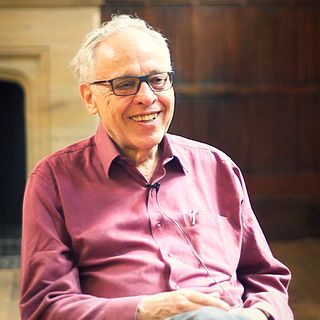
Joseph Ivor Silk FRS is a British-American astrophysicist. He was the Savilian Chair of Astronomy at the University of Oxford from 1999 to September 2011.

Catherine Lucy Hawking is an English journalist, novelist, educator, and philanthropist. She is the daughter of the theoretical physicist Stephen Hawking and writer Jane Wilde Hawking. She lives in London, and is a children's novelist and science educator.
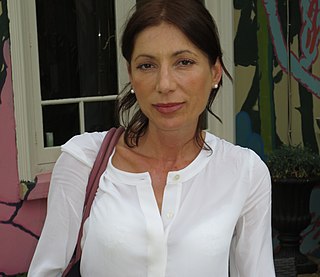
Laura Mersini-Houghton is an Albanian-American cosmologist and theoretical physicist, and professor at the University of North Carolina at Chapel Hill. She is a proponent of the multiverse hypothesis and the author of a theory for the origin of the universe that holds that our universe is one of many selected by quantum gravitational dynamics of matter and energy. She argues that anomalies in the current structure of the universe are best explained as the gravitational tug exerted by other universes.
Stephen Hawking's Universe is an astronomical documentary from 1997 made for the Public Broadcasting Service featuring the theoretical physicist Stephen Hawking. The six-episode series discusses the history of astronomy as well as black holes and dark matter.

The American Institute of Physics (AIP) instituted their Science Writing Award to "promote effective science communication in print and broadcast media in order to improve the general public's appreciation of physics, astronomy, and allied science fields." The winner receives $3000, and an engraved Windsor chair. The award is given in three broad categories: 1) science writing, 2) work intended for children, and 3) work done in new media. The AIP stopped issuing awards to three categories: 1) work by a professional journalist 2) work by a scientist, and 3) broadcast media

Parallel Worlds: A Journey Through Creation, Higher Dimensions, and the Future of the Cosmos is a popular science book by Michio Kaku first published in 2004.

Stephen William Hawking was an English theoretical physicist, cosmologist, and author who was director of research at the Centre for Theoretical Cosmology at the University of Cambridge. Between 1979 and 2009, he was the Lucasian Professor of Mathematics at Cambridge, widely viewed as one of the most prestigious academic posts in the world.
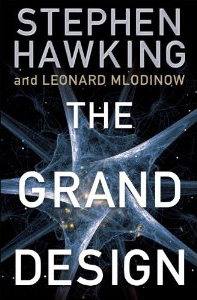
The Grand Design is a popular-science book written by physicists Stephen Hawking and Leonard Mlodinow and published by Bantam Books in 2010. The book examines the history of scientific knowledge about the universe and explains eleven-dimensional M-theory. The authors of the book point out that a Unified Field Theory may not exist.

The First Three Minutes: A Modern View of the Origin of the Universe is a book by American physicist and Nobel Laureate Steven Weinberg.
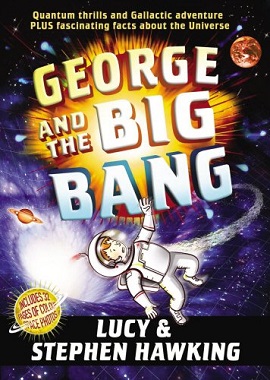
George and the Big Bang is a 2011 children's book written by Stephen and Lucy Hawking. The book is the third book in the George series, following George's Secret Key to the Universe and George's Cosmic Treasure Hunt. George and the Big Bang is available in paperback, hardback and audio versions.
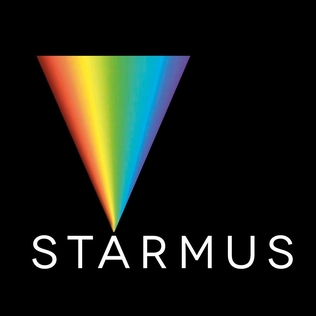
The Starmus International Festival is an international gathering focused on celebrating astronomy, space exploration, music, art, and the natural sciences. It was founded by astronomer / amateur musician Garik Israelian and musician / astrophysicist Brian May. The festival has featured multiple well-known astronauts and astronomers.

George and the Unbreakable Code is a 2014 children's book written by Stephen and Lucy Hawking. The book is the fourth book in the George series, following George's Secret Key to the Universe, George's Cosmic Treasure Hunt, and George and the Big Bang, and preceding George and the Blue Moon.

George and the Blue Moon is a 2016 children's book written by Lucy and Stephen Hawking with Christophe Galfard. The book was preceded by George's Secret Key to the Universe in 2007, George's Cosmic Treasure Hunt in 2009, George and the Big Bang in 2011 and George and the Unbreakable Code in 2014.

Brief Answers to the Big Questions is a popular science book written by physicist Stephen Hawking, and published by Hodder & Stoughton (hardcover) and Bantam Books (paperback) on 16 October 2018. The book examines some of the universe's greatest mysteries, and promotes the view that science is very important in helping to solve problems on planet Earth. The publisher describes the book as "a selection of [Hawking's] most profound, accessible, and timely reflections from his personal archive", and is based on, according to a book reviewer, "half a million or so words" from his essays, lectures and keynote speeches.
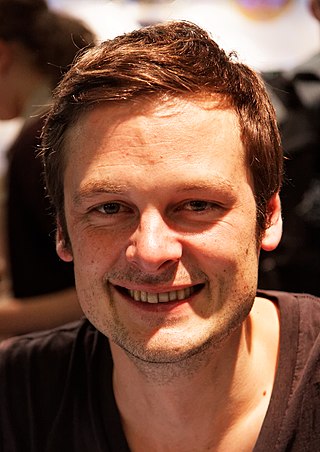
Christophe Galfard is a French physicist and writer.



















